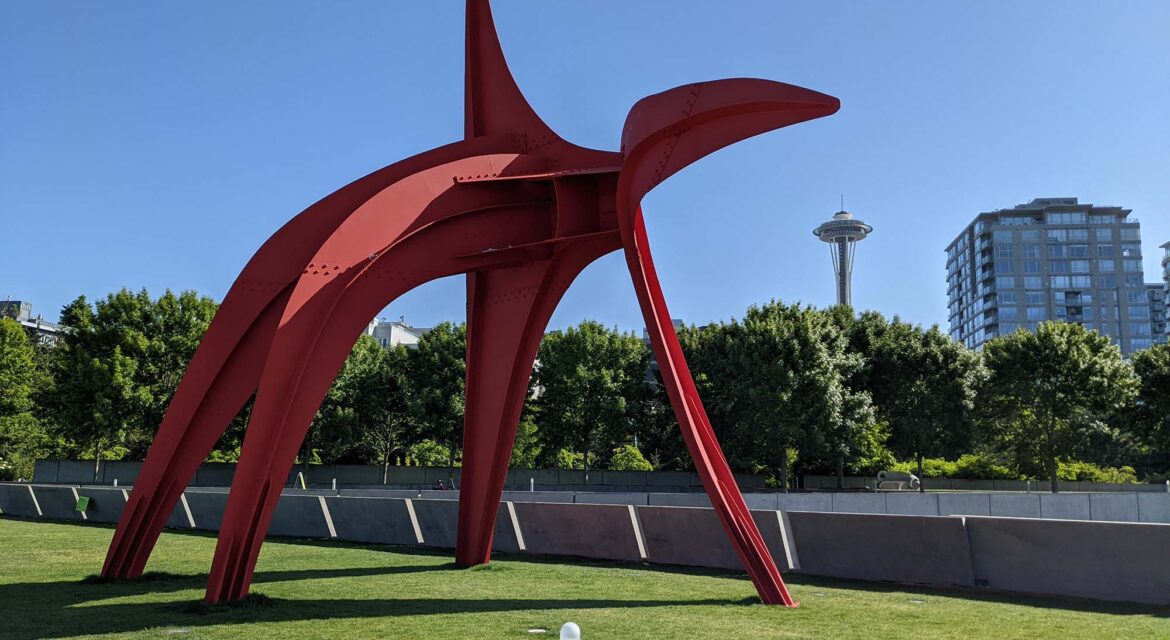 What was a desolate and contaminated area formerly used for industrial purposes was transformed into the Olympic Sculpture Park for the benefit of audiences of all types. It has given Seattle residents and visitors the opportunity to experience a variety of public art while also taking in the natural beauty of the Olympic Mountains and Puget Sound. Owned and maintained by the Seattle Art Museum, the park highlights what transformations can mean for stakeholders and entire communities.
What was a desolate and contaminated area formerly used for industrial purposes was transformed into the Olympic Sculpture Park for the benefit of audiences of all types. It has given Seattle residents and visitors the opportunity to experience a variety of public art while also taking in the natural beauty of the Olympic Mountains and Puget Sound. Owned and maintained by the Seattle Art Museum, the park highlights what transformations can mean for stakeholders and entire communities.

From Brownfield to Sculpture Park
Olympic Sculpture Park resides on a 9-acre parcel of land on Seattle’s downtown waterfront that was previously occupied by an oil and gas corporation Unocal until the 1970s. It then became a contaminated brownfield that made further development difficult. The Seattle Art Museum proposed to transform the area into one of the only green spaces in Downtown Seattle.
 In 2001, the Seattle Art Museum sponsored a competition to find a designer that could transform the site into something totally new. Doing so wasn’t just about changing the space for the better, but also forming a connection between the city and the natural landscape.
In 2001, the Seattle Art Museum sponsored a competition to find a designer that could transform the site into something totally new. Doing so wasn’t just about changing the space for the better, but also forming a connection between the city and the natural landscape.
New York-based Weiss/Manfredi Architecture/Landscape/Urbanism was selected for their plan to return the site to a functioning ecosystem while also creating a space for outdoor sculpture and public recreation. It was also designed to provide audiences with views of Puget Sound, the Olympic Mountains, Mount Rainier, and the surrounding Seattle skyline.
Completely open in a way that invites people into the park while simultaneously integrating itself into the landscape of the city, Olympic Sculpture Park has become a monument for the city on account of the engagement that it enables for audiences of all types. This engagement is driven by the numerous and notable sculptures and works of art it contains.

Art and Engagement
Olympic Sculpture Park contains numerous sculptures that vary in size and focus, all of which are located in spaces that are specifically suited to them. Pieces range from the figurative to the abstract, some of which have a direct connection to the city of Seattle. Regardless of their origin, audiences have embraced all of these pieces in different ways to cultivate their status as icons for the city.
Eagle is an abstract sculpture by Alexander Calder that has become one of the most famous sculptures in the park. Seattle Cloud Cover is an outdoor glass bridge and sculpture by Teresita Fernández. Bunyon’s Chess by Mark di Suvero is one of the more famous pieces in Olympic Sculpture Park, as the artist has pieces at other sculpture parks throughout the world. Father and Son is an outdoor fountain sculpture by Louise Bourgeois that welcomes visitors into the park.
Echo by Jaume Plensa has become one of the most notable pieces in the park. Named for the mountain nymph of Greek mythology who offended a goddess, the piece has her eyes closed, seemingly listening or in a state of meditation over the Puget Sound.
 The engagement at Olympic Sculpture Park isn’t strictly related to the sculptures, which has cultivated powerful revenue opportunities. Donations to support the park allow patrons to have their names immortalized. Additionally, the PACCAR Pavilion is an 18,000-square-foot glass and steel structure located at the park’s main entrance. It contains exhibition and event space along with areas for educational programming, underground parking, a bookshop, and a café, all of which represent significant sources of direct revenue. These distinctions have further enabled the space to become a prominent location on maps and guides of the city.
The engagement at Olympic Sculpture Park isn’t strictly related to the sculptures, which has cultivated powerful revenue opportunities. Donations to support the park allow patrons to have their names immortalized. Additionally, the PACCAR Pavilion is an 18,000-square-foot glass and steel structure located at the park’s main entrance. It contains exhibition and event space along with areas for educational programming, underground parking, a bookshop, and a café, all of which represent significant sources of direct revenue. These distinctions have further enabled the space to become a prominent location on maps and guides of the city.
All of the sculptures and places to engage at Olympic Sculpture Park highlight what it has meant to see this space totally transformed for the better. These distinctions have defined a legacy that will continue to resonate across the region and beyond.

A Transformative Legacy
 Seattle features numerous parks that have been transformed for the benefit of their surrounding community, but Olympic Sculpture Park uniquely showcases how these kinds of transformations can redefine expectations of an area for both residents and visitors. Doing so in a space where the natural beauty of the region connects with the modern metropolis has transformed the legacy of the area in a way that will continue to create opportunities for stakeholders and interest from audiences.
Seattle features numerous parks that have been transformed for the benefit of their surrounding community, but Olympic Sculpture Park uniquely showcases how these kinds of transformations can redefine expectations of an area for both residents and visitors. Doing so in a space where the natural beauty of the region connects with the modern metropolis has transformed the legacy of the area in a way that will continue to create opportunities for stakeholders and interest from audiences.

